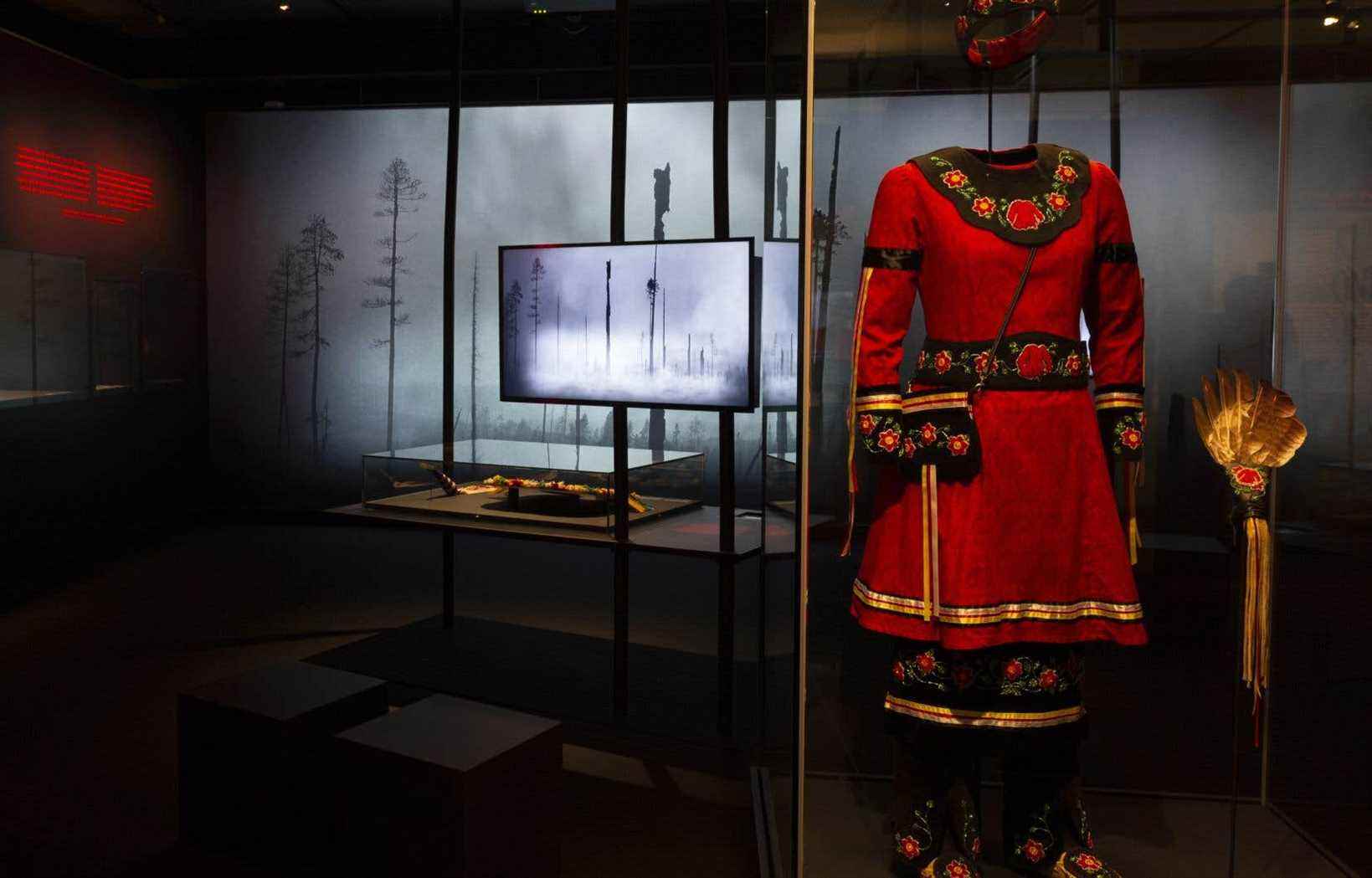This text is part of the special section Museums
Indigenous voices today. Knowledge, trauma, resilience : the new permanent exhibition at the McCord Museum is a cry from the heart of the First Nations, from which we do not come out completely unscathed.
Welcome to my territory, seem to tell us, from the entrance, these voices that filter from a Tewegan in the center of a reinvented forest. This exhibition is not another collection of art objects, it is a journey through the culture, the wounds and the strength of the First Nations of Quebec. It is above all the result of a long consultative work carried out by the Huron-Wendate Elisabeth Kaine, professor of design at the University of Quebec at Chicoutimi and specialist in the self-representation of Aboriginal people.
The testimonies collected from 800 members of the 11 nations of Quebec between 2010 and 2018 have made it possible to identify objects and documents that carry this message. “It’s the approach on which this exhibition is based that is the most important,” says Jonathan Lainey, Curator of Aboriginal Cultures at the Museum and member of the Huron-Wendat nation.
Age-old knowledge
Most of the objects presented in the first room devoted to knowledge — Us from a long time ago — are ancient, but they are mostly “contextualized and reinterpreted by today’s Indigenous voices”. And we travel a lot through this hundred sacred or utilitarian objects, bark canoe, Atikamekw snowshoes, Inuit kayak, selected by Innu Jean St-Onge, from the Maison de transmission de la culture innue Shaputuan, in Uashat.
They tell us about the incredible technical skill of the Aboriginal people imposed by their nomadic way of life and their adaptation to a sometimes extreme environment. Like these insulating sealskin boots or this incredible windbreaker made of animal intestines that looks just like modern technical clothing.
“Behind these objects is an approach contrary to our civilization, explains Jonathan Lainey. When the model met the needs perfectly, it was kept for the rest of its life. We knew how to collect from the wild before stocks ran out.
Reborn from suffering
Change of atmosphere in the room Our shattered universeall in red and black, which echoes colonial violence: Indian Act, missing Aboriginal women, tragedies of residential schools, child abduction, banished cultural practices, slaughter of dogs in Inuit communities.
Through video footage and period documents, this section recounts the dramatic impact of colonization on personal life, the systemic racism shown against Indigenous people, and the killing of a millennial way of life. “This suffering needs to be heard to lead to reconciliation and healing,” says Jonathan Lainey.
The last area of the expo, Take our rightful place, is a message of hope and a look far into the future. “Aboriginal people are not just the victims of history,” says the Museum’s curator of Aboriginal cultures. Neither history nor past dramas. Today’s Aboriginal culture is also rooted in modernity. The proof, this milking adornment, revisited by the contemporary Huron-Wendat artist, Ludovic Boney, made of straps and recycled scraps. A work that draws from tradition the tools to rebuild a strong and resilient identity.
